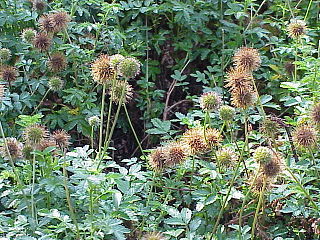
Acaena is a genus of about 60 species of mainly evergreen, creeping herbaceous perennial plants and subshrubs in the family Rosaceae, native mainly to the Southern Hemisphere, notably New Zealand, Australia and South America, but with a few species extending into the Northern Hemisphere, north to Hawaii and California.

Nestegis is a genus of flowering plant in the olive family, Oleaceae. There are five currently accepted species in the genus: three species are endemic to New Zealand, while one can be found on New Zealand and Norfolk Island. Another is restricted to Hawaiʻi.

Kohautia is a genus of flowering plants in the family Rubiaceae. They are native to tropical areas of Asia, Africa, and Madagascar. Thirty-one species are known. The type species for the genus is Kohautia senegalensis.

Uncinia is a genus of flowering plants in the family Cyperaceae, known as hook-sedges in Australia and as hook grasses or bastard grasses in New Zealand. The genus is characterised by the presence of a long hook formed by an extension of the rachilla, which is used to attach the fruit to passing animals (epizoochory), especially birds, and it is this feature which gives the genus its name, from the Latin uncinus, meaning a hook or barb.
Hoffmanniella is a monotypic genus of flowering plants in the family Asteraceae. There is only one known species, Hoffmanniella silvatica.
Koehneola is a monotypic genus of flowering plants in the daisy family. There is only one known species, Koehneola repens.
Heeria is a monotypic genus of flowering plants belonging to the family Anacardiaceae. The only species is Heeria argentea.
Hallianthus is a monotypic genus of flowering plants belonging to the family Aizoaceae. It only contains one species, Hallianthus planus
Ellisiophyllum is a monotypic genus of flowering plants belonging to the family Plantaginaceae. It contains a single species, Ellisiophyllum pinnatum(Wall. ex Benth.) Makino

Hodgkinsonia is a monotypic genus of flowering plants belonging to the family Rubiaceae. It only contains one species, Hodgkinsonia ovatifloraF.Muell.
Hullettia is a genus of flowering plants belonging to the family Moraceae.

Guilfoylia is a monotypic genus of flowering plants belonging to the family Surianaceae. The only species is Guilfoylia monostylis.

Hellmuthia is a monotypic genus of flowering plants belonging to the family Cyperaceae. The only species is Hellmuthia membranacea.







